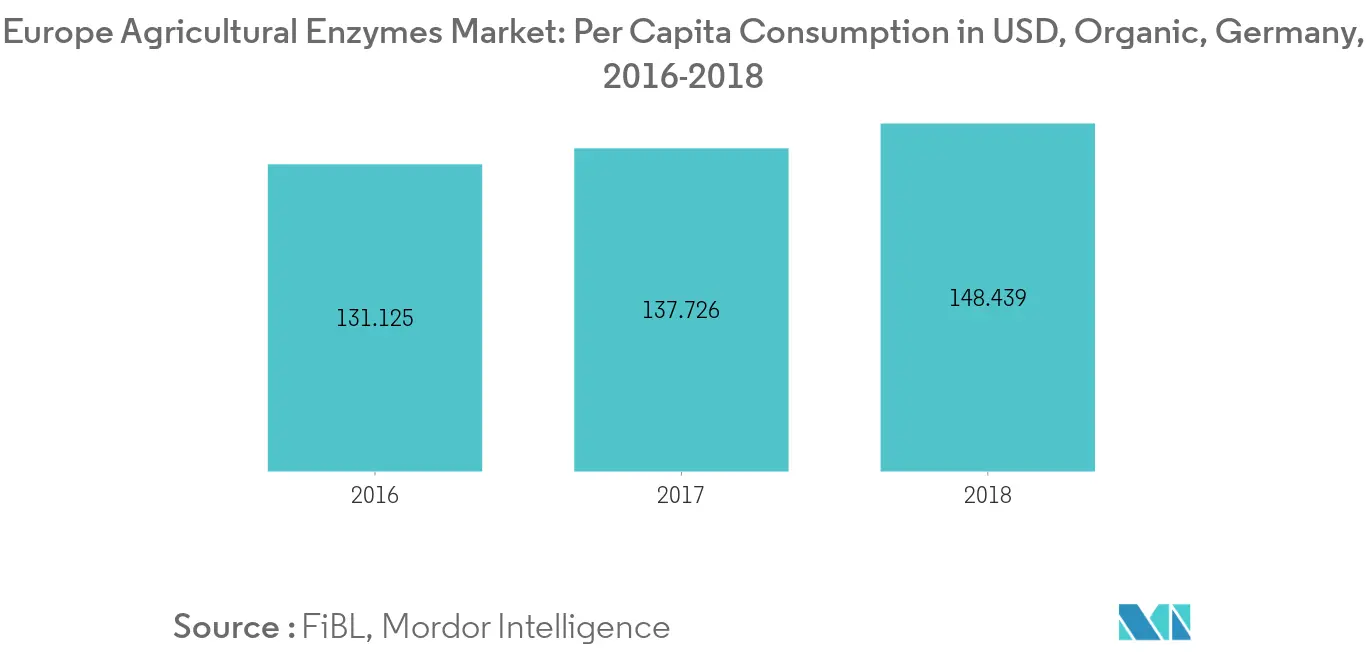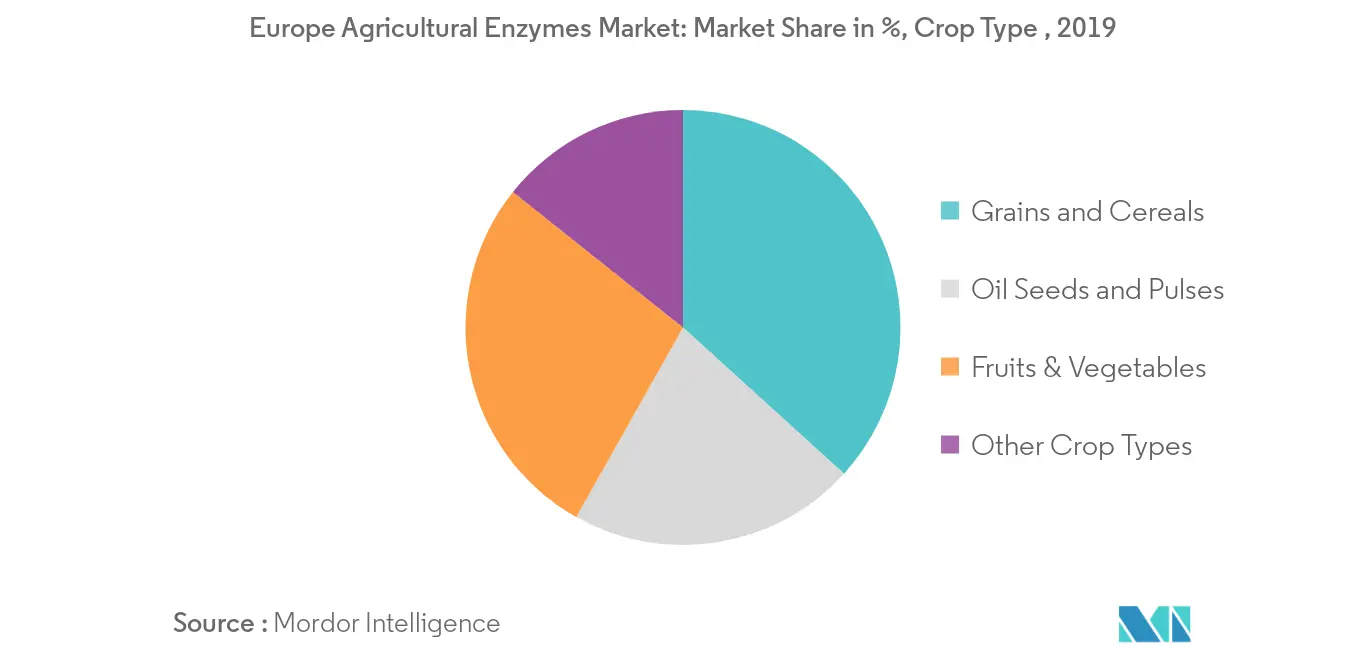Market Trends of Europe Agricultural Enzymes Industry
This section covers the major market trends shaping the Europe Agricultural Enzymes Market according to our research experts:
Rising demand for Organic Products
The growing demand for organic food and natural food, along with the increasing awareness among people about ill-effects of chemicals has raised the demand for green and naturally sourced agrochemicals over the years. According to the Research Institute of Organic Agriculture(FiBL), organic farming in Europe reached 14.6 million ha in 2017, which has increased by 7.6% of the previous year. Europe's agricultural land Over half of the EU's organic area is concentrated in four countries namely Spain (2.1 million hectares), Italy (1.9 million hectares), and France (1.7 million hectares). Furthermore, in 2017 retail sales in Europe accounted for USD 41.83 billion which has recorded a 10.5% growth compared to the previous year. Of the total retail sales, Germany has the highest market with USD 11.1 billion followed by France USD 8.86 billion and Italy USD 3.5 billion. Thus the growing organic farming practice and the consumer demand for chemical-free products are driving the market for agricultural enzymes.

Grains and Cereals Segment Dominates the Market
Growing demand for agricultural production owing to rising population and changing consumer dietary habits is forcing the farmers and crop growers across the region to adopt chemical-free production practices. According to the Food and Agriculture Organisation, in 2017 the cereals and grains production amounted to 526 million metric tons and 249.48 million metric tons respectively as compared to 498. 59 million metric tons and 252.42 million metric tons in 2018. According to Eurostat, in 2018, Wheat is the majorly grown cereal that occupies the 44% share followed by maize with the share of 23% of the total cereals produced. Additionally, according to the Research Institute of Organic Agriculture, of the total 14.6 million ha of organic land in Europe, the area under cereal cultivation was the highest with the 2.52 million ha in 2017, an increase of 8% as compared to the previous year. Germany is the largest consumer of cereals in the region totalling to 41.4 million tonnes of consumed cereals for food, feed and industrial purposes in 2017 in the form of baked goods, breakfast cereals, rice, pasta, etc. The shift in farming practices is mainly explained by the rising cost of crop protection chemical coupled with consumer demand will drive the market.


